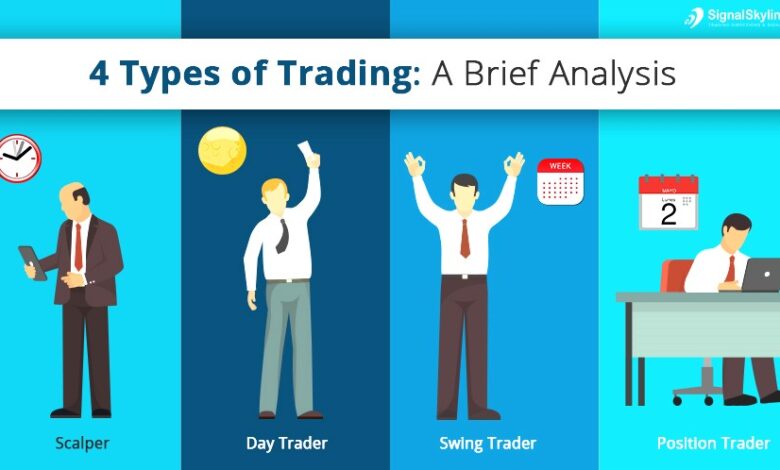Different Types of Trading: Understanding the Easiest Approach
Mastering Trading Styles: Unveiling the Simplest Approach to Trading

Easiest Approach Trading, an art of financial maneuvering, encompasses various strategies, each with its intricacies and learning curves. Determining the easiest type of trading requires a comprehensive evaluation of different methodologies and their practical applications. From the fast-paced world of day trading to the more strategic approach of long-term investments, each style demands a unique skill set and understanding.

Understanding Day Trading
Day trading stands out as one of the most exhilarating yet demanding forms of trading. It involves the swift buying and selling of financial instruments within the same day. Traders leverage short-term fluctuations in the market, aiming to capitalize on small price movements. The allure of quick profits often draws beginners, but it demands significant dedication, a high-risk tolerance, and a deep understanding of market trends and technical analysis.
The Intricacies of Swing Trading
Contrasting day trading, swing trading extends the time horizon to days or weeks. It relies on identifying short- to medium-term trends and capturing price swings within a broader market trend. This approach allows traders to avoid constant monitoring of the markets, making it a more manageable option for those with other commitments. Nonetheless, it requires a keen eye for technical analysis and a disciplined approach to risk management.
Delving into Position Trading
Position trading embraces a longer-term perspective, where trades are held for weeks, months, or even years. This method involves a thorough analysis of fundamental factors influencing the market, such as economic indicators, geopolitical events, and industry trends. While it demands patience and a strong stomach for market fluctuations, it offers a less time-consuming approach, suitable for those with a long-term vision and a penchant for fundamental analysis.
Long-Term Investing: A Steady Approach
For individuals seeking a more passive and less intensive approach, long-term investing proves to be an appealing strategy. This approach involves buying assets with the intent of holding them for an extended period, often years or decades. Investors focus on the underlying value of the assets, aiming to benefit from the overall growth of the market over time. It requires patience, research into strong companies or diversified assets, and a commitment to weather market volatility.
Which Trading Style is Easier?
Determining the ease of trading largely depends on individual preferences, risk tolerance, and time commitments. While day trading offers the allure of quick profits, it demands constant attention and a high level of expertise. On the other hand, long-term investing requires less active management but necessitates patience and the ability to endure market fluctuations without panicking.
Factors Influencing Ease in Trading
Several factors contribute to the perceived ease of trading. Knowledge, experience, emotional discipline, and adaptability play pivotal roles. Understanding market patterns, staying updated on global economic shifts, and employing effective risk management strategies are crucial regardless of the chosen trading style.
Conclusion
In the realm of trading, the concept of “easy” is subjective and highly dependent on an individual’s characteristics and goals. Each trading style comes with its own set of advantages and challenges. While day trading offers potential quick gains, it demands constant vigilance and expertise. Conversely, long-term investing provides a more relaxed approach but requires patience and a steadfast commitment to weather market fluctuations.



